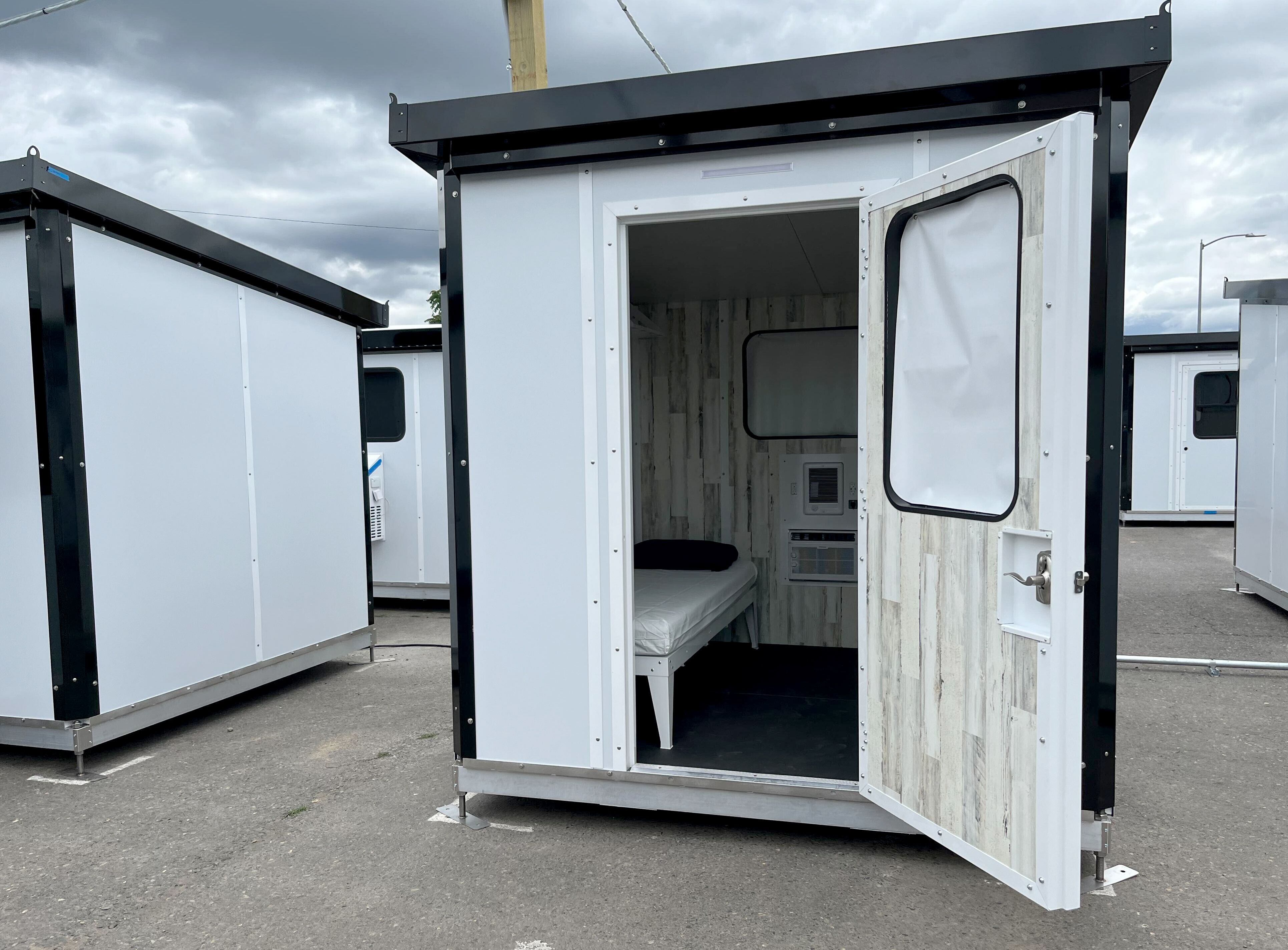 |
| Image Source: Oregon Public Broadcasting |
One never has to look far in Portland to see Homeless camps set up along sidewalks and highway exits. Usually surrounded by piles of garbage, scrap metal, and blue tarps, these sites are what countless homeless people in Portland call home. Not only are they what many would consider an eyesore, places like these are often unsanctioned by city officials. These camps often block businesses or spill out onto busy roads, causing unsafe and unsanitary environments for those passing by and those that live there. And besides providing the most basic refuge from harsh outside elements, unregulated homeless shelters do not offer outside resources from their surrounding neighbors.
In 2023, Portland enacted a daytime camping ban on its residences, directly effecting these makeshift neighborhoods. But without a proper replacement of these camps, without giving their inhabitants a safer alternative, the ban simply forced people under freeways and overpasses; a metaphorical sweeping under the rug, so to speak. Rather than attempting to get these people off the streets, a bright green flyer will be taped to the flagpole outside their tent, demanding the removal of their campsite by a certain date. And while changes have since been made to the camping ban, allowing people to set up tents on public property during certain hours with certain regulations, not much has improved in terms of actually getting these people back on their feet.
The message that Portland sends to its homeless population is obvious; We don't care where you go or what happens to you, as long as it doesn't happen here.
However, within the past few years, the city has begun enacting what many have been calling Safe Rest Villages; small neighborhoods made up of tiny home shelters complete with electricity, AC, even heating, all while also offering services that are meant to help residents move into long-term housing. Originally proposed in June 2021 by Commissioner Dan Ryan, community engagement coordinator Laudie Porter explains;
"So in the Multnomah Safe Rest Village, for example... We really try and set the expectation that we want people to see this as a transitional space and to focus on identifying the barriers to housing. And to go about identifying and removing those barriers to a more substantial living situation."
Most people need a referral in order to gain housing at one of these sites, but even then, the numbers are continuing to grow. Depending on the site, these alternative shelters hold anywhere between 30-100 eight by eight units, with many planning on expanding to include more. Many of these camps also allow couples and pets to stay in a unit together, a privilege that is not always offered at typical homeless shelters. Alternative shelters can also act as centers of community; besides offering tangible resources connections, they also create a space where people feel comfortable asking for help and voicing their concerns.
For so long, Portland has been focusing its efforts on telling Homeless people where they cannot go; but now, we are finally beginning to see alternative options telling them where they can. However, it is important to remember that Portland's Homelessness population continues to increase everyday. Unfortunately, there simply are not enough beds no matter where you go. This is why it is so important for those with the capability to offer the Houseless community as many resources as possible; not just basic housing, but also teaching them tools and offering the support needed for them to get off the streets and stay off the streets.
Sources and More Info
Portland's Daytime Camping Ban
Portland Unanimously Passes New Regulations for Camping on Public Property
Portland Safe Rest Village Triple Capacity

No comments:
Post a Comment